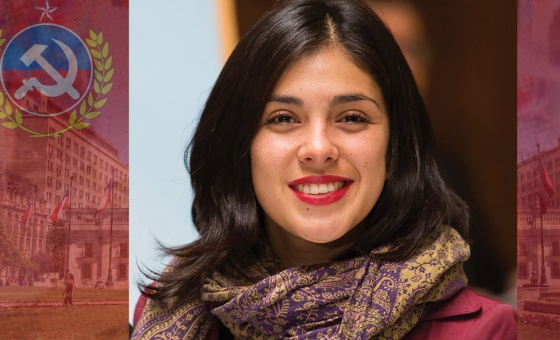This is the last article you can read this month
You can read more article this month
You can read more articles this month
Sorry your limit is up for this month
Reset on:
Please help support the Morning Star by subscribing here
Where are you from?
The Tory heartland of Surrey — although now I’m wondering whether I’ve always lived in a Tory area, or whether I’m just some sort of Tory-magnet. If I am, then I’ll volunteer for the Mars mission.
What prompted you to draw cartoons?
Since I was a kid I’ve always been an avid scribbler and was always drawing something. Around the time of doing A-levels, I was reading books by Fidel, Che, Chomsky and Blum and my artwork became socio-political but it was dark and not satirical, let alone being a cartoon. It was a long road to end up drawing cartoons.
Have you any formal training in the arts?
I have a BA (Hons) in Fine Art from what was the Surrey Institute of Art and Design in Farnham. I made political-satirical games and sculpture — and polarised the tutors. I was simultaneously “going to fail” and “a breath of fresh air.” Near the end of the course, a tutor said my drawings were good and had I thought about doing cartoons. I thought he was crazy.
Which part of the cartooning process do you find the most difficult?
I use pen, paper and colouring pencils, so the colouring can take ages sometimes. I have an idea, I scribble it quickly and then I draw it out “nicely.” Any of those stages can be easy or intense. It depends on how well my brain is working.
How do you pick a subject?
Whatever annoys me.
Is it difficult for you to ‘get’ the likeness right in a caricature?
I have a terrible memory for faces. I see shapes in things but don’t seem to see human faces very well. With my cartoons I tend to focus on the wider policy/war/ideological issue rather than personal politics anyway and I tend to use more generic representations of a group or class.
Do you see the ridiculing of public figures as a cartoonist’s duty?
Breaking down a person’s facade can be very important in undermining them politically but my artwork tends to target the foundations and overall policy. Individual politicians aren’t generally what annoys me, they change all the time. It’s wars, blockades and large-scale messing with the world that draws my ire (pardon the pun).
Are cartoons merely comic relief?
My cartoons are tendentious and part of a struggle, but they are a weapon in comical form. The nature of being a cartoon gives them an almost childish and less serious appearance but they have serious satirical venom. Humour is an important aspect of satirical cartoons but if people laugh but nothing changes, we lose.
How do you expect readers to react to your satire?
Hopefully with a smile — or maybe a wince — followed by a steely determination to make the world a better place.
Cartoonists are said to be gloomy. Fair comment?
I’m always smiling but there’s a fine line between happiness and insanity. The late Japanese film director Akira Kurosawa once said: “In a mad world, only the mad are sane.” I consider myself to be an optimist and I think my cartoons are evidence of that. If I didn’t believe that things could get better then I wouldn’t try to help change things.












